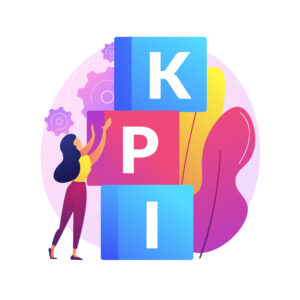Data-Driven Decision Making in Consulting: Unleashing Insights for Success
- February 18, 2024
- Posted by: IMC Nigeria
- Categories: Articles, blog, Publications

Image by DC Studio on Freepik
In the increasingly changing world of consulting and technology, making informed decisions is paramount. Data-Driven Decision-Making (DDDM) has emerged as a powerful approach to enhance consulting practices. In this blog post, we will explore how consultants can leverage data analytics and key performance indicators (KPIs) to drive success for themselves and their clients.
Leveraging Big Data Analytics to Drive Consulting Insights
Data-Driven Decision Making (DDDM) is a powerful catalyst for success. At its core lies the concept of big data analytics, which empowers consultants to extract valuable insights from vast volumes of data. Let us go a little deeper into this fascinating world of Big Data.
Understanding Big Data
What Is Big Data?
Big data refers to the large volume of data, both structured and unstructured, that inundates businesses on a day-to-day basis1. Imagine a telecom company collecting not only call histories but also geographical data, cell browsing history, product preferences, and website interactions. The challenge lies in effectively harnessing this wealth in data.
The Excel Analogy
Think of big data as the next phase beyond the capabilities Microsoft Excel has enabled. Excel revolutionized data analysis by allowing business professionals to engage with and analyze substantial datasets. However, as businesses accumulate more data, they often find that Excel’s capacity falls short. It is not about complexity; it’s about sheer volume—more rows and columns than Excel can conveniently handle.

Unleashing Big Data Analytics
What Is Big Data Analytics?
Big data analytics involves the process of harnessing and analyzing large amounts of data to uncover meaningful insights. It encompasses methodologies, programming tools, and statistical techniques that go beyond what Excel can offer. Let’s explore how consultants can leverage big data analytics:
- Data Collection and Aggregation
- Data Cleaning and Preprocessing
- Exploratory Data Analysis (EDA)
- Predictive Modeling
Data Collection and Aggregation:
- Gathering Data: Consultants collect data from various sources, including client interactions, market trends, financial records, and more. These diverse data streams provide valuable insights.
- Centralizing Information: Tools like web scraping, APIs, and data warehouses play a crucial role in centralizing this information. They allow consultants to access and organize data efficiently.
Data Cleaning and Preprocessing:
- Ensuring Data Quality: Before analysis, consultants focus on data quality. This involves:
Removing Duplicates: Identifying and eliminating duplicate records ensures accuracy.
Handling Missing Values: Consultants address missing data points through imputation or exclusion.
Standardizing Formats: Data may arrive in different formats; standardization ensures consistency.
- Transforming Raw Data: Converting raw data into a usable format is essential. This step sets the stage for subsequent analysis.
Exploratory Data Analysis (EDA):
-
-
- Diving into the Data: Consultants explore the dataset thoroughly. They look for:
-
Patterns: Identifying trends, seasonality, or recurring behaviors.
Correlations: Understanding relationships between variables.
Outliers: Detecting extreme values that might impact analysis.
-
-
- Visualization Tools: Consultants use tools like Python, R, or Tableau to create visualizations. These help in understanding the data distribution, relationships, and anomalies.
-
See this article: The Best Data Visualization Tools Of 2024, on forbes.com, for more on Data analytics tools for Data Visualization.
Predictive Modeling:
- Forecasting Trends: Consultants develop models to predict future trends. For instance:
Customer Behavior: Predicting customer preferences, churn rates, or purchasing patterns.
Project Outcomes: Forecasting project completion timelines or resource requirements.
- Techniques Used:
Regression: Modeling relationships between variables (e.g., predicting sales based on advertising spend).
Classification: Categorizing data (e.g., spam vs. non-spam emails).
Time Series Analysis: Analyzing data points over time (e.g., stock prices).
Real-Life Application: Optimizing Supply Chain
Consider a consulting project for a retail chain. By analyzing historical sales data, consultants identify peak demand periods, optimize inventory levels, and streamline logistics. The result? Cost savings and improved customer satisfaction.
Using Key Performance Indicators (KPIs) for Measuring Consulting Projects
In the dynamic world of consulting, Key Performance Indicators (KPIs) serve as essential compasses, guiding consultants toward project success. Let us see how KPIs empower consultants and how to use them effectively.

Defining KPIs: Navigating the Metrics Maze
What Are KPIs?
KPIs are quantifiable metrics that gauge project performance. They provide a clear view of progress, aligning with project objectives and organizational goals. Here is how to navigate the metrics maze:
- Alignment with Project or Organizational Objectives
- Specificity and Relevance
- Balanced Scorecard Approach
Alignment with Project or Organizational Objectives:
KPIs should directly relate to project goals. For instance:
-
-
- If the goal is to enhance customer satisfaction, you should be tracking metrics like Net Promoter Score (NPS) or customer retention rate.
- If operational efficiency is the focus, consider KPIs related to process optimization or cost reduction.
-
Specificity and Relevance:
-
-
- KPIs must be specific, relevant, and actionable.
- Avoid vague metrics; instead, choose those that directly impact project outcomes.
-
Balanced Scorecard Approach:
A holistic view involves using a balanced set of KPIs across different domains:
-
-
- Financial: Metrics related to revenue, profitability, and cost management.
- Customer: Metrics reflecting customer satisfaction, loyalty, and engagement.
- Internal Processes: Efficiency indicators within the project workflow.
- Learning/Growth: Metrics related to employee development and knowledge enhancement.
-
Real-Life Application: Measuring Project Success
The Startup App Launch
Imagine a consulting firm assisting a tech startup in launching a new mobile app. This is how KPIs can come into play:
-
- User Acquisition Rate:
- This KPI tracks how quickly new users download and install the app.
- A high acquisition rate indicates effective marketing and user interest.
- App Engagement:
- Measuring user interactions within the app—such as time spent, features used, and frequency of visits—provides insights.
- High engagement suggests a valuable app experience.
-
Conversion Rate:
- The percentage of users who take a desired action (e.g., making a purchase, signing up, or sharing the app).
- A higher conversion rate signifies successful user journeys.
- Retention Rate:
- How many users continue using the app over time.
- Improving retention ensures long-term success.
- User Acquisition Rate:
Regular Monitoring and Adjustments
Consultants monitor these KPIs throughout the project lifecycle. Regular reviews allow timely adjustments:
- If user acquisition lags, marketing strategies may need tweaking.
- Low engagement prompts UX enhancements.
- Conversion bottlenecks require targeted interventions.
- Retention challenges demand personalized approaches.
Conclusion: Navigating with Precision
In the consulting voyage, KPIs act as navigational beacons. They illuminate the path toward project success, ensuring that decisions are grounded in data and aligned with objectives. Remember: KPIs aren’t just numbers; they’re the pulse of your consulting journey, and that In the digital age, data isn’t just information—it’s the compass guiding your consulting journey.
